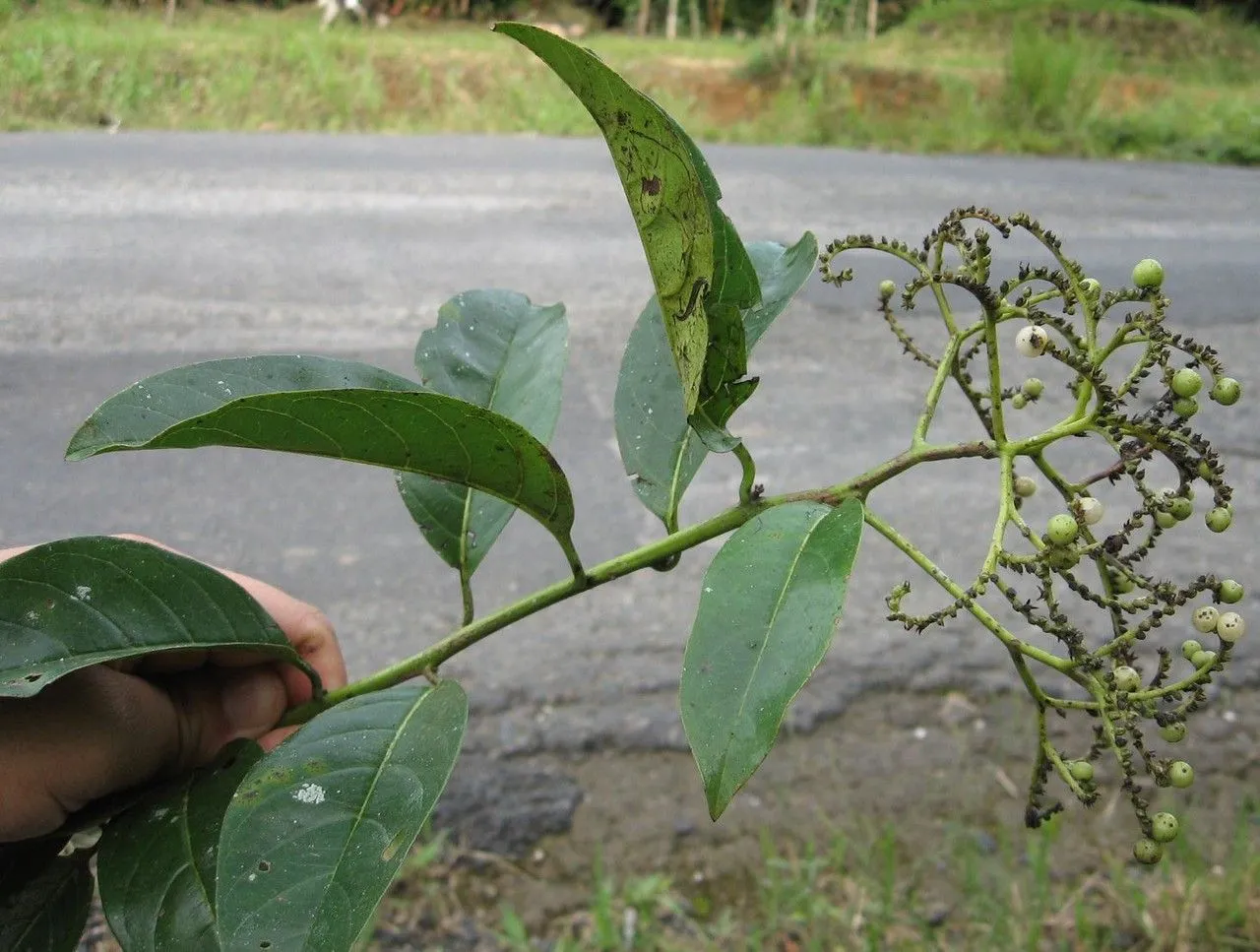
Author: Sw.
Bibliography: Prodr. Veg. Ind. Occ.: 40 (1788)
Year: 1788
Status: accepted
Rank: species
Genus: Tournefortia
Vegetable: False
Observations: Unknown
Niguita, a remarkable species known scientifically as Tournefortia bicolor, has become an intriguing subject for botanists and plant enthusiasts alike. It belongs to the Boraginaceae family, an eclectic group of flowering plants known for their diverse and often striking appearances. Despite the wealth of knowledge available on many plants within this family, Tournefortia bicolor remains somewhat enigmatic, with much yet to be discovered about its specific characteristics and ecological preferences.
The primary bibliography reference for Tournefortia bicolor can be traced back to its description in “Prodr. Veg. Ind. Occ.: 40 (1788)” by the author Sw. This documentation marks a significant point in botanical literature, providing a foundational classification and description of the plant.
Known commonly as Niguita, Tournefortia bicolor is recognized for its unique bifurcated coloration, which may contribute to its name. However, the specific details and observations regarding its habitat, growth conditions, and uses are not well-documented, presenting a fascinating opportunity for future research and exploration.
Given its membership in the Boraginaceae family, it is reasonable to hypothesize that Niguita shares some characteristics with other plants in this family, such as the presence of bristly hairs and a preference for certain climates or soil types. However, without concrete observations, much of Niguita’s story remains a mystery, inviting botanists and plant lovers to delve deeper into its natural history.
In conclusion, Niguita or Tournefortia bicolor stands as a testament to the ongoing journey of botanical discovery. Its presence in scientific literature since 1788 underscores its established recognition, yet the lack of detailed observations highlights the continuous need for scientific exploration. As such, it represents both an historical artifact and a beacon for future botanical research within the rich tapestry of the Boraginaceae family.
Eng: niguita
En: Niguita
Taken Feb 13, 2015 by Nelson Zamora Villalobos (cc-by-nc)
Taken Jul 1, 2008 by OTS – Oviedo-Brenes, Federico (cc-by-nc-sa)
Taken Apr 28, 2017 by Nelson Zamora Villalobos (cc-by-nc)
Taken Jul 1, 2008 by OTS – Oviedo-Brenes, Federico (cc-by-nc-sa)
Taken Sep 3, 2015 by OTS – Oviedo-Brenes, Federico (cc-by-nc-sa)
Taken Sep 3, 2015 by OTS – Oviedo-Brenes, Federico (cc-by-nc-sa)
Taken Sep 3, 2015 by OTS – Oviedo-Brenes, Federico (cc-by-nc-sa)
Taken Apr 28, 2017 by Nelson Zamora Villalobos (cc-by-nc)
Taken Apr 28, 2017 by Nelson Zamora Villalobos (cc-by-nc)
Taken Apr 28, 2017 by Nelson Zamora Villalobos (cc-by-nc)
Taken Apr 28, 2017 by Nelson Zamora Villalobos (cc-by-nc)
Taken Apr 28, 2017 by Nelson Zamora Villalobos (cc-by-nc)
Taken Apr 28, 2017 by Nelson Zamora Villalobos (cc-by-nc)
Taken Apr 28, 2017 by Nelson Zamora Villalobos (cc-by-nc)
Taken Apr 28, 2017 by Nelson Zamora Villalobos (cc-by-nc)
Taken Jul 1, 2008 by OTS – Oviedo-Brenes, Federico (cc-by-nc-sa)
Growth habit>: Vine, Shrub
Family: Myrtaceae Author: (F.Muell.) K.D.Hill & L.A.S.Johnson Bibliography: Telopea 6: 402 (1995) Year: 1995 Status:…
Family: Rubiaceae Author: Pierre ex A.Froehner Bibliography: Notizbl. Bot. Gart. Berlin-Dahlem 1: 237 (1897) Year:…
Family: Sapindaceae Author: Koidz. Bibliography: J. Coll. Sci. Imp. Univ. Tokyo 32(1): 38 (1911) Year:…
Family: Asteraceae Author: A.Gray Bibliography: Pacif. Railr. Rep.: 107 (1857) Year: 1857 Status: accepted Rank:…
Family: Fabaceae Author: Medik. Bibliography: Vorles. Churpfälz. Phys.-Ökon. Ges. 2: 398 (1787) Year: 1787 Status:…
Family: Aspleniaceae Author: (Cav.) Alston Bibliography: Bull. Misc. Inform. Kew 1932: 309 (1932) Year: 1932…